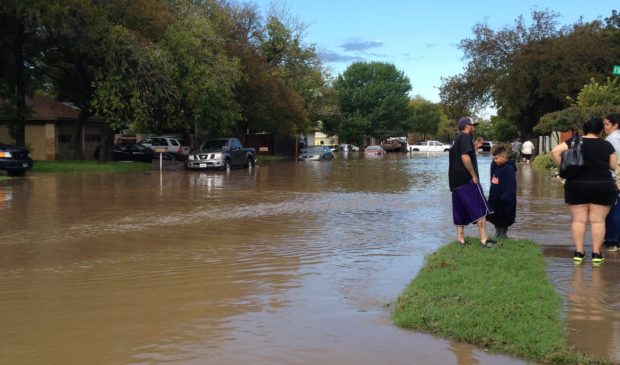Council adopts new flood control resolution
Thursday, January 28, 2021 by
Jonathan Lee In her first move on City Council, new member Vanessa Fuentes authored a resolution directing the city to provide an update on its flood resilience plans.
“Often in my community it’s not a matter of if the next big flood happens, but when the next big flood happens,” Fuentes said. “It is essential that this issue remains a priority in order to prevent further loss of life and displacement, which unfortunately disproportionately affects the most vulnerable members of our community.”
The mayor and Council members praised Fuentes’ efforts and voted unanimously in favor. Fuentes represents District 2 in Southeast Austin where some of Austin’s most damaging floods have occurred.
The resolution tells the city manager to summarize what the city has already done to manage floods, in particular the mitigation efforts for the area’s most dangerous creeks, such as Onion Creek.
The manager’s report must also describe how future amendments to the Land Development Code, updates to the Watershed Protection Master Plan and unadopted recommendations by the Flood Mitigation Task Force could be included in flood control plans. Council could turn the report’s conclusions into policy after April, when the report is due.
Climate change informed Council’s conversation about flood risk and planning. “We know that Central Texas is designated as Flash Flood Alley,” Fuentes said, “and that we are expected to see an increase in extreme weather events.”
The National Weather Service predicts that flooding will worsen in Austin as the climate becomes more unstable. According to the Atlas 14 study, 25-year, 100-year and 500-year flood events are now projected to be much more intense than previously estimated.
Fuentes brought attention to the “catastrophic and historic flood events that happened in District 2 in 2013 and 2015 (that) have claimed lives, displaced families, damaged hundreds of homes.” Some residents who were displaced after these floods have not been able to find homes in Austin because they couldn’t afford the cost, Fuentes said.
Community organizers from Go Austin/Vamos Austin who spoke at the meeting celebrated the resolution but wanted to ensure it was more than just symbolic. They urged the city to restrict development in areas vulnerable to floods. One organizer, Frances Acuna, asked the city to “put in place strict regulations for localized flooding such as preventing increased impervious cover in neighborhood areas or in any redevelopment.”
Planning Commissioner Greg Anderson, who also spoke during the public comment period, wanted to ensure future flood regulations don’t restrict new affordable housing citywide. Higher-density development in the right places, he said, “is one of the most effective ways to bring down the flood risk.”
Mayor Pro Tem Natasha Harper-Madison amended the resolution to make sure affordability will be considered in the report and in any subsequent changes to city policy. Fuentes agreed with Harper-Madison’s amendment. “(Staffers) informed me that the affordability impact study is already standard practice,” Fuentes said. “It’s something that staff does anytime when they bring forth recommendations; it will not impact our timeline or the intent of our resolution.”
Photo by kissingtoast made available through a Creative Commons license.
The Austin Monitor’s work is made possible by donations from the community. Though our reporting covers donors from time to time, we are careful to keep business and editorial efforts separate while maintaining transparency. A complete list of donors is available here, and our code of ethics is explained here.
You're a community leader
And we’re honored you look to us for serious, in-depth news. You know a strong community needs local and dedicated watchdog reporting. We’re here for you and that won’t change. Now will you take the powerful next step and support our nonprofit news organization?








